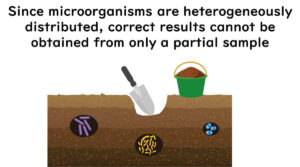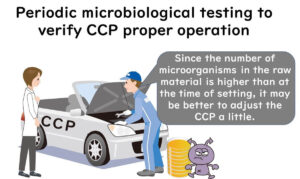Aside from food sources such as beef, the main infection routes for Enterohemorrhagic Escherichia coli (EHEC) O157 include contamination through livestock faeces, affecting soil in fields and environmental water, leading to tainted vegetables. However, there have been cases where seemingly unrelated foods have caused infections. An example from the US in 2009 involves a food poisoning incident from commercially packaged cookie dough made from wheat flour. This article introduces the paper by Dr. Neil and colleagues from the FDA, which summarises this incident.
Neil et al.
A novel vehicle for transmission of Escherichia coli O157:H7 to humans: multistate outbreak of E. coli O157:H7 infections associated with consumption of ready-to-bake commercial prepackaged cookie dough--United States, 2009
Clinical Infectious Diseases 2012;54(4):511–8
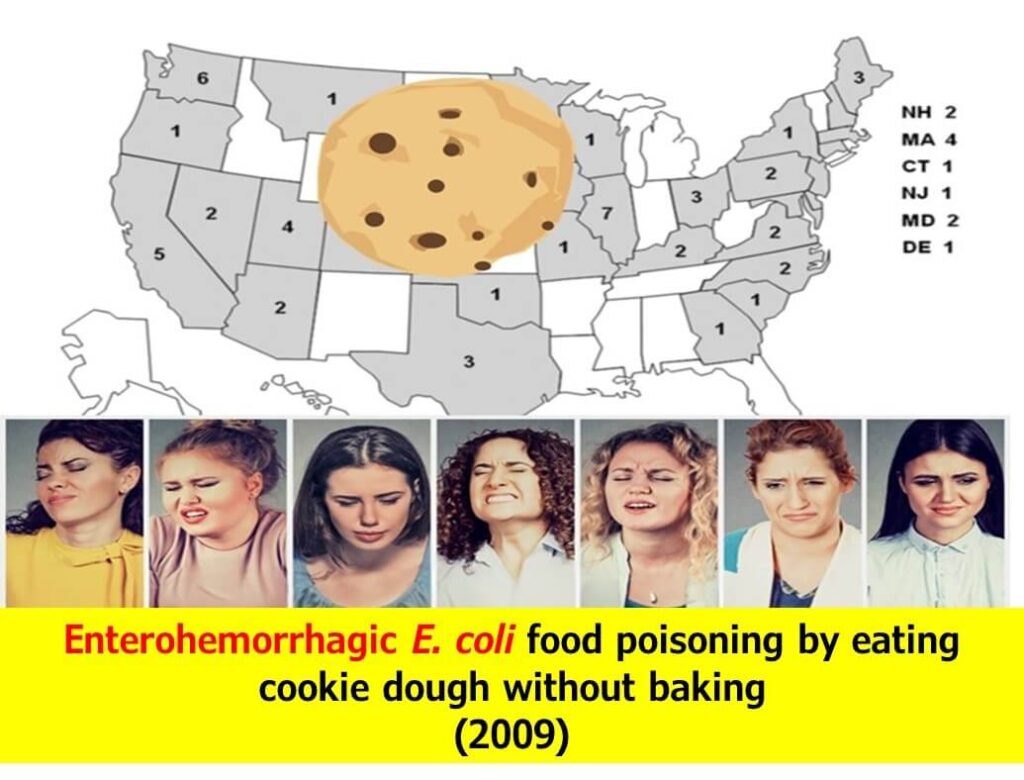
Overview of the Food Poisoning Incident
Let's start with an overview of the incident.
From March to September 2009, an EHEC O157 outbreak occurred across multiple states. There were 77 patients across 30 states, with 35 hospitalised and 10 developing haemolytic uremic syndrome (HUS). Fortunately, no deaths were reported.
Of the 35 hospitalised patients, 33 had consumed commercially packaged cookie dough. All these 33 patients had purchased Brand A from Company N.
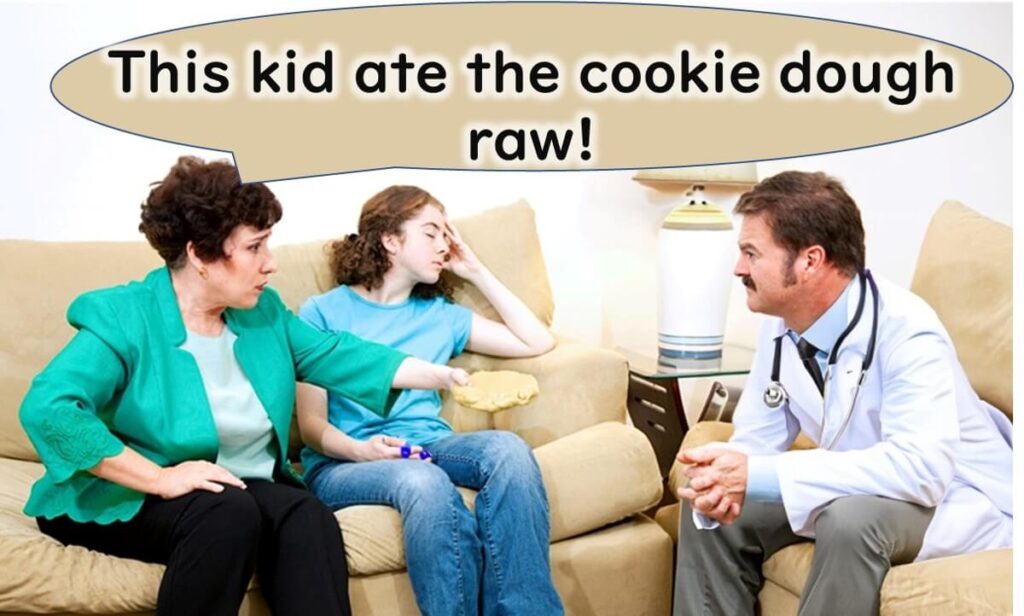
Microbiological tests isolated EHEC from the cookie dough, marking the first global instance of EHEC food poisoning from cookie dough.
How Did EHEC O157 Contaminate the Cookie Dough?
Why did food poisoning occur from cookie dough? The investigation revealed that many patients consumed the cookie dough raw or undercooked, which should have been baked before eating.
How did EHEC O157 get into the cookie dough? This crucial point remained unresolved even after the FDA investigation. Here is a brief summary of the investigation.
Examination of Cookie Dough Ingredients
First, the factory producing the cookie dough, located in a naturally blessed suburb, was suspected of having a contamination route for EHEC O157 into the facility. However, no such contamination route was identified.
Next, the ingredients of the cookie dough were scrutinised.
Firstly, the eggs. Pasteurisation of the eggs was confirmed, and no failure in this process was found, ruling out eggs as the source.
Similarly, sugar, baking soda, and margarine were found to have undergone sufficient sterilisation, ruling them out as potential sources.
The chocolate chips were also considered a possibility since most patients had consumed cookie dough containing chocolate chips. Though there were previous instances of Salmonella contamination in chocolate chips, no proof was found that they caused the EHEC O157 contamination. Furthermore, many patients consumed cookie dough with chocolate chips because the company predominantly produced this variety, making it less likely to be the culprit from an epidemiological perspective.
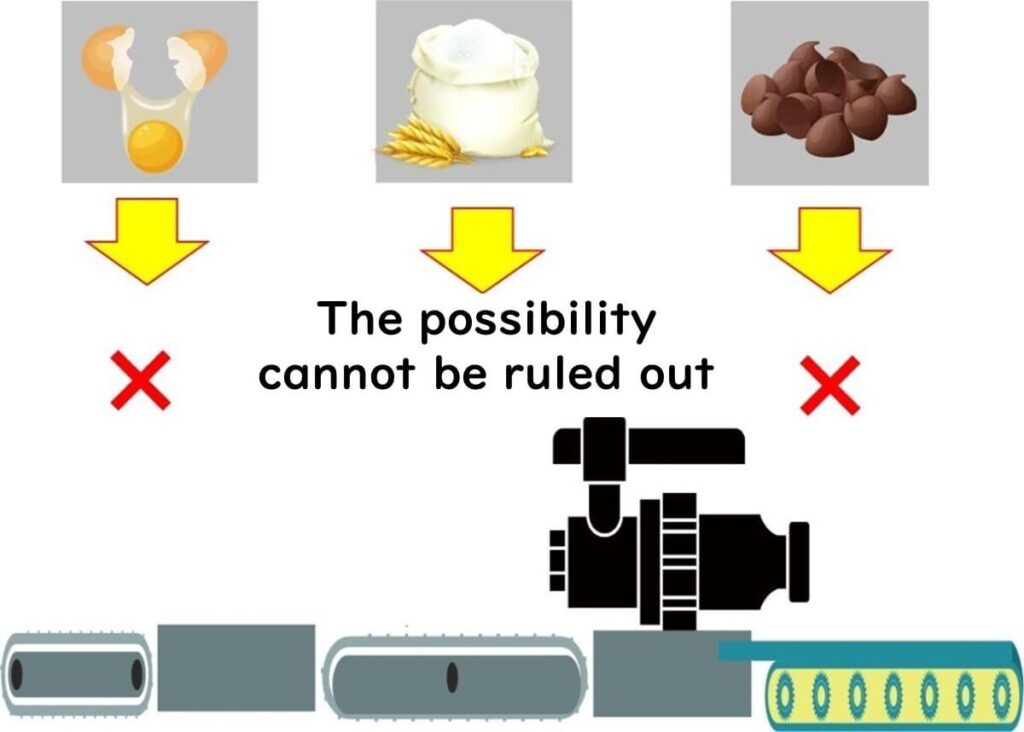
Flour Emerges as a Suspected Source of EHEC O157 Contamination
Finally, flour remained a potential source.
While not linked to EHEC, flour has been reported to be contaminated with Salmonella and associated with Salmonella food poisoning. There have been cases where E. coli was detected in flour. A US study reported that 12.8% of commercially available flour was contaminated with E. coli. Although there was no definitive evidence linking flour to the EHEC O157 contamination, the FDA speculated that flour, which does not undergo sterilisation during cookie dough production, might have been the most likely cause. However, this remained a hypothesis, and the incident was ultimately classified as having an unknown cause.
Do Not Eat Cookie Dough Raw
The FDA concluded by warning consumers to avoid eating ready-to-bake cookie dough raw or undercooked. According to a survey in the paper, 53% of American university students admitted to eating raw cookie dough.

Why I Found This Paper Important

This paper is significant as it highlights a case of EHEC O157 food poisoning unrelated to beef or beef-derived products.
EHEC is a Gram-negative bacterium, and generally, I teach in university lectures that its environmental resistance is lower compared to Gram-positive bacteria like Staphylococcus aureus or Listeria monocytogenes, thus reducing the likelihood of secondary contamination.
However, this paper suggests that EHEC’s survival capability in the environment and the possibility of secondary contamination through food processing and distribution routes are significant. This area is likely to become an important research topic in the future.
For those interested in basic information on EHEC, please refer to the following article:
Shiga-toxin-producing Escherichia coli (STEC)
※The images and illustrations used in this article are intended to aid the reader's understanding of the case overview and are not related to any actual events or individuals.
